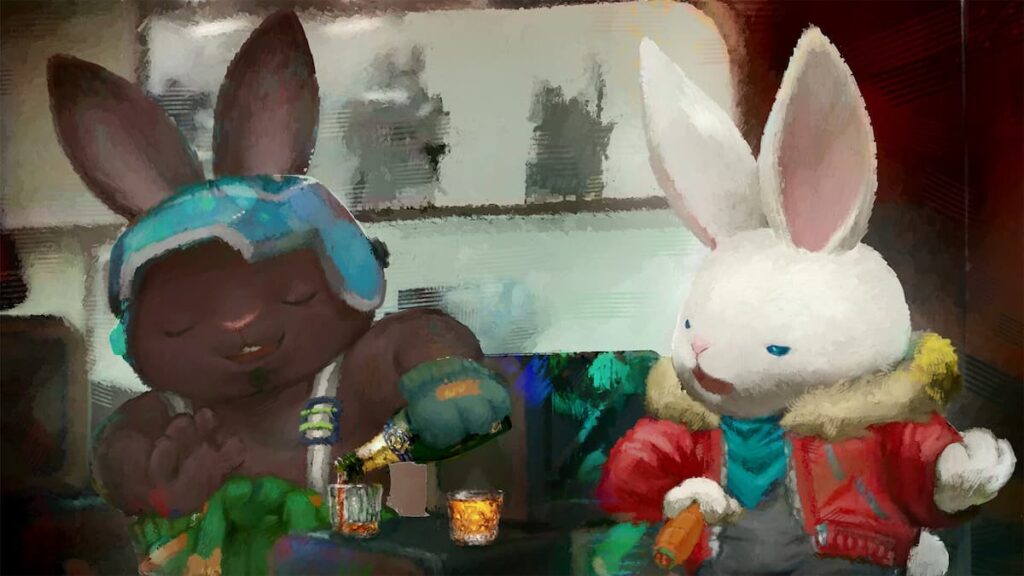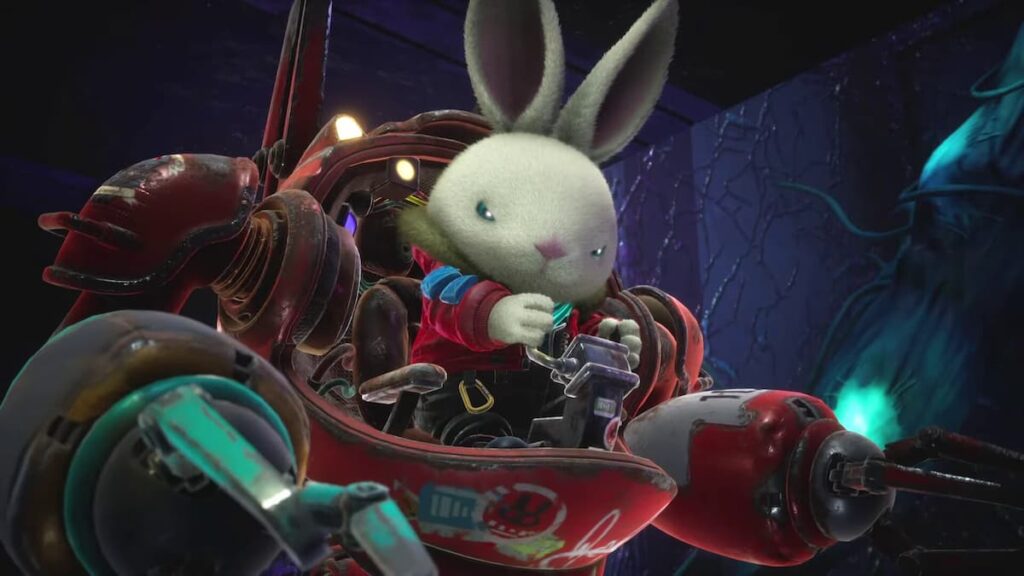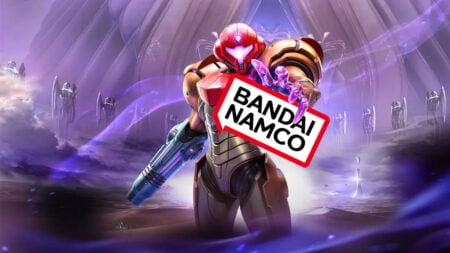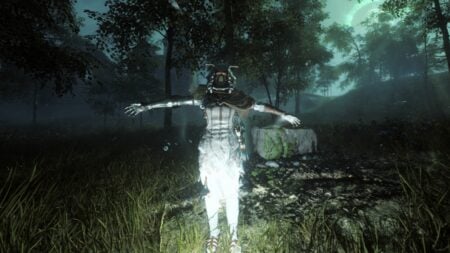Skip To...
When I walked away from my Summer Games Fest 2024 demo of Rusty Rabbit, I genuinely believed I’d found one of the show’s hidden gems. The premise was wild: a post-human Earth blanketed in snow, where rabbits had inherited the Earth, built mechs, and took religious guidance from the gospel of Peter Rabbit. It was charming. It was weird. It had Gen Urobuchi‘s fingerprints all over it. And perhaps most importantly, it felt like it had a strong identity. It was equal parts Metroidvania, visual novel, and post-apocalyptic bunny theology simulator.
Now, after spending real time with it for my Rusty Rabbit review, I wish I could say it fully capitalized on that promise. In truth, it doesn’t. But that doesn’t mean it’s a bad game. It just means it’s a game that shines brightly in a few areas, stumbles hard in others, and ultimately feels like a fascinating oddity that’s easier to appreciate in concept than execution.
The Gospel According to Peter Rabbit

First, let’s talk about the world-building because that remains Rusty Rabbit’s most unique and compelling strength. Set thousands of years after humanity’s disappearance, the rabbits of this world have interpreted The Tale of Peter Rabbit as sacred scripture. McGregor is spoken of like a culinary Satan, and priests recite scripture with all the solemnity you’d expect from an organized religion… only they’re quoting Beatrix Potter.
It’s absurd, but in a way that’s fully intentional. The game relishes in the odd juxtaposition between cute and mechanical, sacred and ridiculous. And for a good while, it works. It gives Rusty Rabbit an identity beyond its genre trappings, and it’s genuinely enjoyable to see how far they commit to the bit.
The story driving it all is a little more uneven. You play as Stamp, a crusty old rabbit in a mech suit with a no-nonsense attitude and a complicated family history. His grumpy charm is effective early on (thanks in part to a solid vocal performance from Takaya Kuroda), and the idea of unraveling the mystery behind his estranged daughter gives the narrative a nice personal hook. But while the initial threads of the story are promising, much of the writing that follows leans heavily on exposition dumps and a lot of aimless monologuing.
Characters like the BBs –stamp’s recurring companions/rivals– are introduced with some fanfare but rarely rise above being glorified item vendors or one-note comic relief. The game sets them up like they’ll matter, but they don’t. Most of the deeper lore, including the emotional weight behind Stamp’s past, is tucked away in optional conversations or buried in logs that often ramble on about car parts or engineering minutiae with all the enthusiasm of a retired mechanic cornering you at a bar.
Rusty’s Repetitive Routine

The gameplay loop in Rusty Rabbit echoes what I saw at the demo. But stretched across a much longer runtime, the cracks start to show. Each level, typically a self-contained chunk of Smokestack Mountain, is an exercise in drilling through junk, uncovering alternate paths, and cracking open loot boxes. The game calls itself a Metroidvania, but the structure leans closer to segmented missions than a continuous interconnected world.
That’s not inherently a bad thing, but the experience becomes highly formulaic. Finish a level, return to town, upgrade your mech, chat with NPCs, accept new sidequests, then jump back into the mountain. Repeat. Eventually, it starts to feel less like exploration and more like checking errands off a list.
Combat also never quite evolves beyond being serviceable. You’re given a suite of weapons –drill, blade, hammer, shotgun– and they’re mostly used to deal with environmental obstacles or low-effort enemy encounters. Boss fights do exist, but most of them favor patience over skill. The fights are slow and sometimes downright tedious. You can tell the game wants you to feel the weight of your mech, but what you actually feel is sluggishness.
A Town Worth Visiting, At Least Once

Between excursions, Stamp can return to a central hub town where the supporting cast resides. There’s a bar, a diner, a church, and all the usual suspects for a game of this sort. The town gives Rusty Rabbit a sense of place, like a home you return to, even if just to restock and hear someone complain about their soup again.
Crafting is another key system, and one that feels more like an obligation than a joy. Yes, you can find parts to build new weapons and gear. But the actual act of farming those parts, especially in the randomized dungeon mode, lacks excitement. Weapon modifiers exist but they rarely matter. And while the game tries to sell the satisfaction of upgrading your Junkster, it never quite becomes a compelling reason to engage with every system.
Whimsy Wrapped in Rust

Visually, Rusty Rabbit retains its appeal. The 2.5D art direction is clean, and there are plenty of small environmental details that make Smokestack Mountain feel worn and lived-in. The character designs strike that perfect balance between cute and bizarre, and despite some inconsistencies in texture quality or animation smoothness, it looks good in motion.
The audio design is solid, with decent environmental ambiance and competent (if not especially memorable) music. The voice acting, however, is where the sound really shines. Kuroda’s performance as Stamp is both funny and fitting, and while the rest of the cast doesn’t leave a huge impression, it’s never grating.
In some ways, Rusty Rabbit is exactly what I expected. And in others, it’s a letdown. The lore and world-building remain the highlight, and Urobuchi’s unique sensibilities give the narrative a distinct flavor that’s hard to ignore. But once the novelty wears off, you’re left with a fairly standard game wrapped in a wonderfully weird aesthetic. Its mechanical gameplay loop lacks the bite of the best Metroidvanias, and its storytelling, while bold in concept, fumbles in the delivery.
And yet… there’s still something to admire here. It’s not every day you get a post-apocalyptic rabbit-mech-digging simulator that treats Peter Rabbit like scripture. In an industry that often feels rehashed, Rusy Rabbit offers something uniquely charming. For some players, that premise alone might be enough. For others, it’ll be a curiosity they peek at and move on from. Rusty Rabbit is never truly great, but it’s certainly not forgettable.
Rusty Rabbit (PC Reviewed)
Weird, wonderful, and occasionally wearying, Rusty Rabbit is a game with a big heart, a rusty shell, and a few too many junk blocks in the way of greatness.
Pros
- A post-human rabbit society built on the gospel of Peter Rabbit is as bizarre as it is brilliant—and it's treated with full commitment.
- Stamp’s gruff attitude and Takaya Kuroda’s vocal performance give the lead character a memorable edge that balances well with the game’s absurd world.
- Once fully upgraded, the Junkster feels great to maneuver, and the later level design offers some enjoyable moments of exploration and progression.
Cons
- The town-to-dungeon-and-back-again structure grows stale quickly, turning what should feel like discovery into routine.
- Sluggish mechanics and shallow encounters keep the action from ever feeling particularly rewarding or engaging.
- While the worldbuilding is rich, it’s often delivered through overly long, mundane conversations that dilute the emotional impact.







